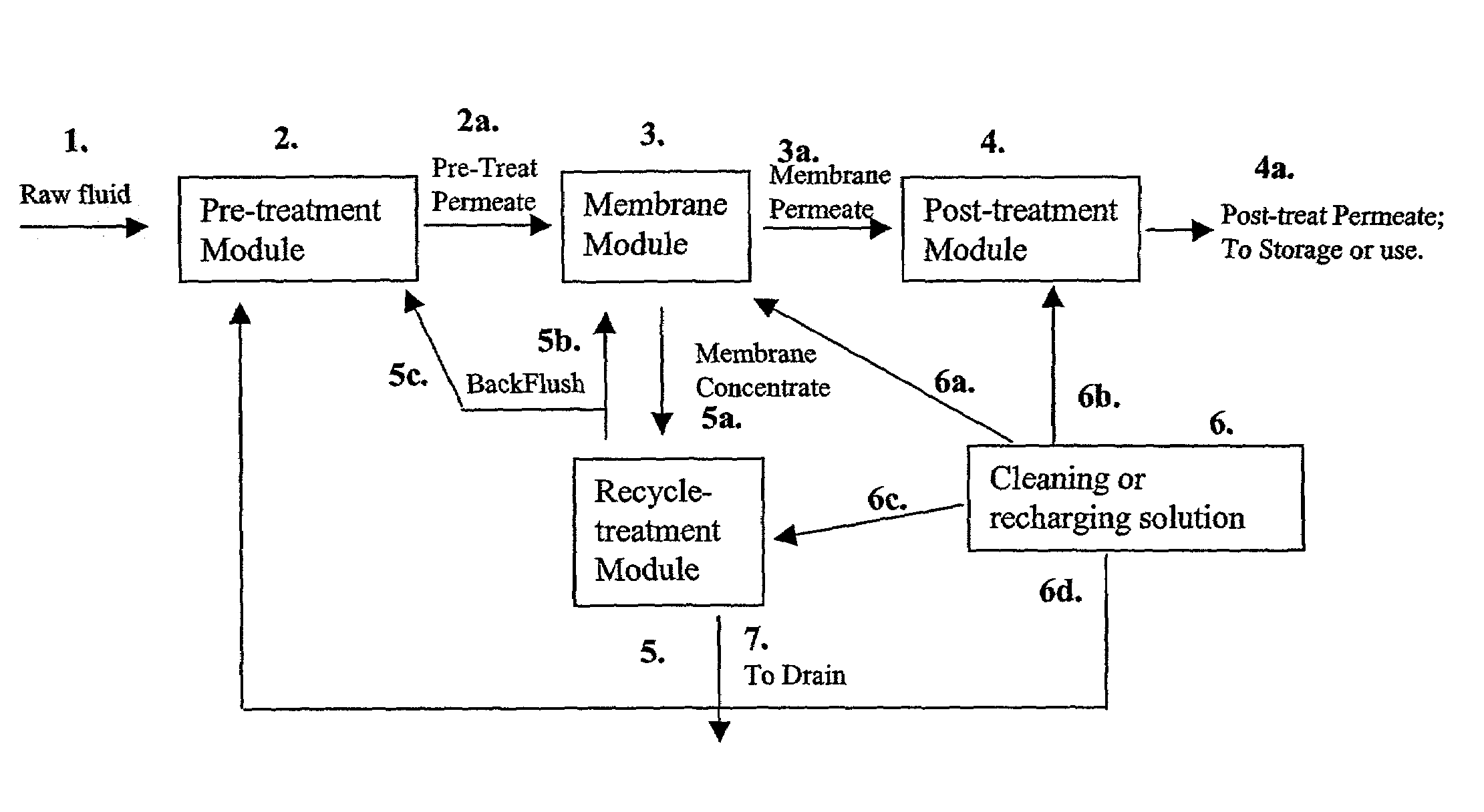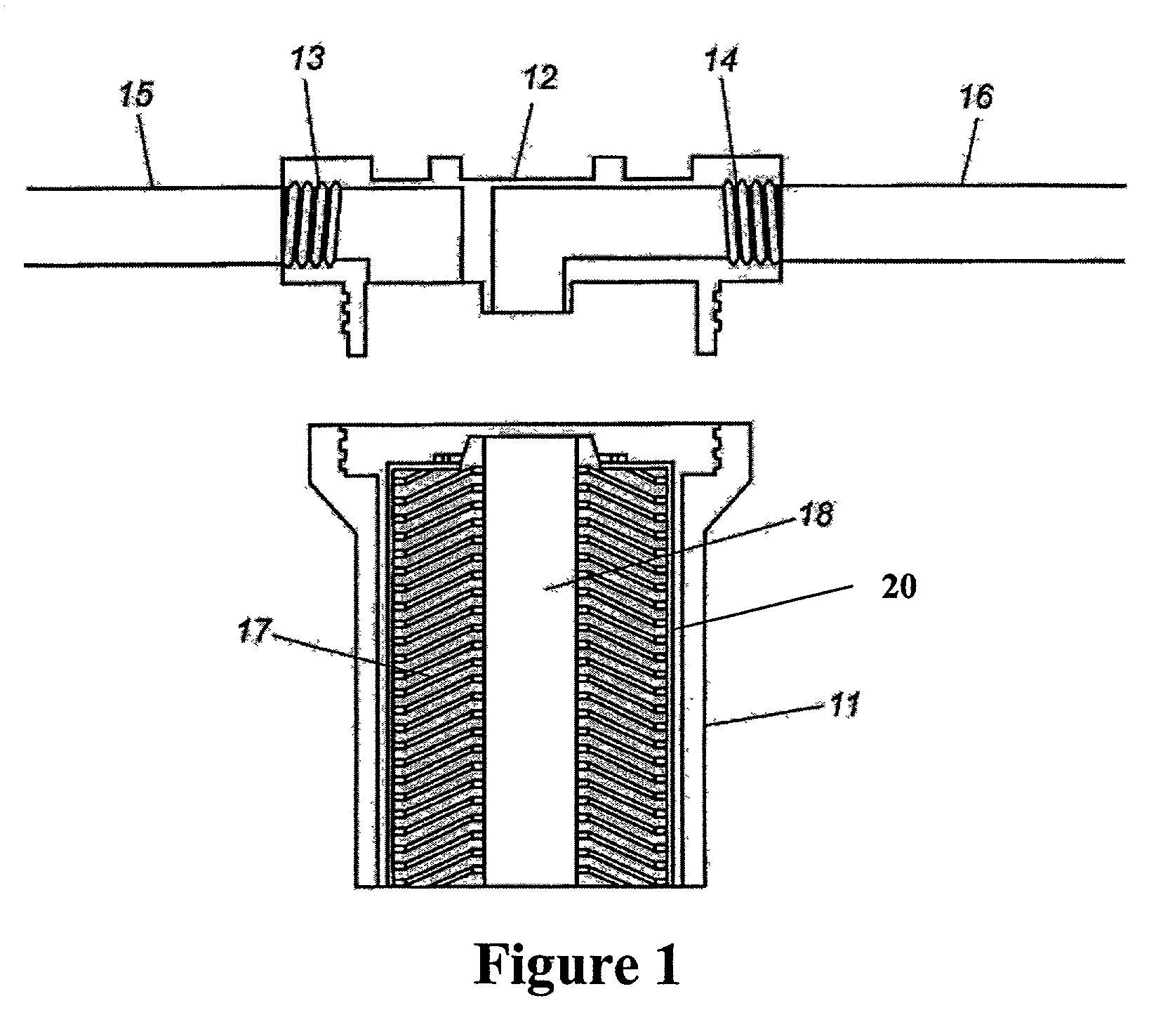Membrane based fluid treatment systems
a technology of membrane based fluid treatment and membrane, which is applied in the direction of membranes, separation processes, filtration separation, etc., can solve the problems insoluble particulates, and insufficient protection of membranes, and achieves the effects of reducing the risk of inability to operate safely, high cost, and high cos
- Summary
- Abstract
- Description
- Claims
- Application Information
AI Technical Summary
Benefits of technology
Problems solved by technology
Method used
Image
Examples
example 1
[0052]Raw water with the following composition, arsenic(III) 0.058 mg / L; calcium 40 mg / L; fluoride 1 mg / L; magnesium 12 mg / L; nitrate 2 mg / L; pH=8.5; sulfate 50 mg / L; and phosphorus 0.04 mg / L. was used to demonstrate the effectiveness of the inventive process.
[0053]As noted in FIG. 1, a preferred embodiment of the inventive process involves the use of a pretreatment module, a membrane module, and a post-treatment module. Both the pretreatment module and post-treatment module house a cylindrical filter block (FIGS. 2–17) which may be prepared with a material composition of approximately 42.5% bone charcoal obtained from Brimac Carbon Industries, approximately 42.5% GAC obtained from KX Industries, and approximately 15% thermoplastic binder material. This bone charcoal includes a mineral mixture that contains varying amounts of metal phosphates including iron, metal silicates, metal sulfates including calcium, metal carbonates including calcium, metal hydroxides, or combinations there...
PUM
| Property | Measurement | Unit |
|---|---|---|
| Pressure | aaaaa | aaaaa |
| Concentration | aaaaa | aaaaa |
| Pore size distribution | aaaaa | aaaaa |
Abstract
Description
Claims
Application Information
 Login to View More
Login to View More - R&D
- Intellectual Property
- Life Sciences
- Materials
- Tech Scout
- Unparalleled Data Quality
- Higher Quality Content
- 60% Fewer Hallucinations
Browse by: Latest US Patents, China's latest patents, Technical Efficacy Thesaurus, Application Domain, Technology Topic, Popular Technical Reports.
© 2025 PatSnap. All rights reserved.Legal|Privacy policy|Modern Slavery Act Transparency Statement|Sitemap|About US| Contact US: help@patsnap.com



